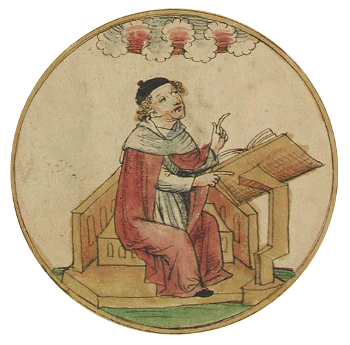
The Twin Prime Conjecture
June 3, 2013 One of my most prized books as a child was the Giant Golden Book of Mathematics, written by mathematician, Irving Adler.[1] This book was nicely illustrated by Lowell Hess, who illustrated quite a few children's books in his career. One illustration I remember from that book was the sieve of Eratosthenes, shown as an actual mechanism for filtering numbered cubes to find the prime numbers. The following figure illustrates such a mechanism. natural number greater than one with no positive divisors aside from itself and one. All other natural numbers are composite numbers, which are constructed by multiplying prime numbers together. A theorem with the impressive title, the fundamental theorem of arithmetic, asserts that any natural number greater than one can be expressed as a product of primes in just one way; so, 54 is just 2 x 2 x 13, and it can't be expressed by any other combination of primes. One thing you notice is that one is not a prime number. If it were, composite numbers could have an infinite number of prime factors, since we can just multiply by as many ones as we desire. Thus, 54 would be 1n x 2 x 2 x 13, where n can be any integer. Also, two is prime, since that's the only way we can construct the even numbers. It's the only even prime number. The fundamental theorem of arithmetic has been proven, but there are many unproven conjectures involving the prime numbers. Goldbach's conjecture states that any even integer greater than two can be expressed as the sum of two primes. Computers have enabled experimental mathematics, and they've given substantial credence to this conjecture, since no counterexample has been found up to 4 x 1018. Anecdotal evidence, however, is not proof, so mathematicians are still examining this conjecture. Examination of any list of prime numbers illustrates that they become rare as we go to larger numbers. This behavior has been quantified by the prime number theorem, which states that the probability that a number N is prime will closely follow the function 1/ln(N). Wikipedia lists 29 prime number conjectures, one of which, the first Hardy–Littlewood conjecture, gives us the mysterious twin prime constant,.6601618158468695739278121100145557784326233602847334133...,also known as sequence A005597 in the On-Line Encyclopedia of Integer Sequences (OEIS). This constant relates to numbers known as the twin primes. Twin primes are prime numbers that differ from each other by the smallest possible interval; namely, two. Thus, (3,5) and (5,7) are twin primes, as are (617,619) and many others. OEIS sequence A077800 is the list of twin primes. According to Wikipedia, there are 808,675,888,577,436 twin prime pairs below 1018. The density of prime numbers decreases as numbers get larger, so the density of twin primes decreases as well. An open problem is whether twin primes exist when we reach arbitrarily large numbers. The twin prime conjecture is that there's an infinite number of twin primes. Euclid, the famous Greek geometer, is the supposed author of this conjecture, which makes it one of the oldest conjectures in number theory.[2]
 | Euclid, from a 15th century Latin manuscript entitled, "Artes Liberales" (The Liberal Arts). (Via Wikimedia Commons.) |
"It's one of those problems you weren't sure people would ever be able to solve.[3]
References:
- Irving Adler (Author), Lowell Hess (Illustrator), "The Giant Golden Book of Mathematics [Hardcover]," Golden Press, first edition 1958, 92 pages.
- Maggie McKee, "First proof that infinitely many prime numbers come in pairs," Nature News, May 14, 2013.
- Erica Klarreich, "Unheralded Mathematician Bridges the Prime Gap," Simons Foundation Press Release, May 19, 2013. Same article on Wired.
- Kenneth Chang, "Solving a Riddle of Primes," The New York Times, May 20, 2013.
- Daniel A. Goldston, János Pintz and Cem Y. Yíldírím, "Primes in tuples I," Annals of Mathematics, vol. 170, no. 2 (September, 2009), pp. 819-862.
- Maggie McKee, "First proof that infinitely many prime numbers come in pairs," Nature News, May 14, 2013.
